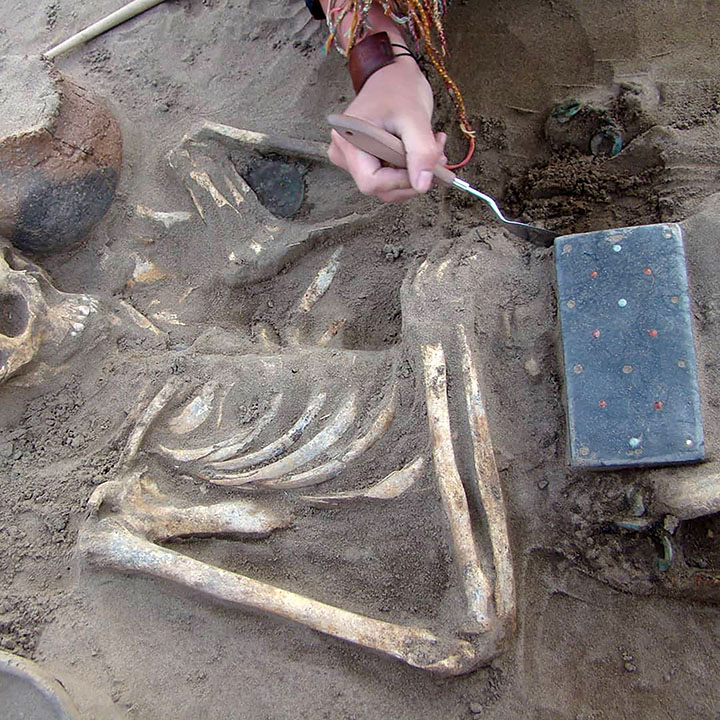2,000-yr-old Item Found Buried with Woman Looks Like a Smartphone
A tomb recently excavated in Siberia revealed what at first appeared to be an ancient iPhone on the 2,100-yr-old remains of a woman dubbed ‘Natasha’ by researchers. Found alongside her skeleton, to the amazement and excitement of all, was an item that looked suspiciously like an iPhone.
It’s not, of course — it’s a belt buckle — but the object bears a striking and astonishing similarity to a iPhone. It’s black, and shaped rather like a check book (remember those?) and has beautiful, precious stones laid into its surface. And it was no doubt just as important to the woman who wore it as our smartphones are to us .

The find was part of a larger excavation, dubbed the “Russian Atlantis.” Skeletons and objects like ‘Natasha’s’ belt buckle date back more than 2,000 years, archaeologists say.
The Siberian Times reported recently that the site was made accessible to archaeologists and other researchers when a massive reservoir was drained during the summer, so researchers could get a look at the relics resting there. The belt buckle is just one of many interesting — and ancient — items found at this “Russian Atlantis.”

The buckle’s precious stones include mother of pearl and turquoise, and even part of an ancient Chinese coin has been carved into it. According to Dr. Pavel Leus, one of the archaeologists on the dig, “Natasha’s burial with a Hunnu-era ‘iPhone’ remains one of the most interesting (items) at this site.” He added, “Hers was the only belt decorated with Chinese Wizhu coins, which helped us to date it.”
Other ancient graves rest close to ‘Natasha,’ including one whom the archaeologists have dubbed ‘Sleeping Beauty.’ The items with which she was buried indicate that she was a designer who worked in leather.
A third set of remains belonged to a woman who was a weaver, researchers confirmed; she had a wooden spindle, inside a sewing kit placed with her.
It’s these kinds of objects, rather like ‘Natasha’s’ so called ‘iPhone,’ that give researchers the clues they need to date the remains accurately.
The site is usually under more than 55 feet of water, according to the Siberian Times. Scientists, historians and archaeologists know they must beat the clock because the reservoir will indeed fill with water again, sooner or later.
They are working feverishly to recover and excavate these rare and historic artifacts before that happens.Elsewhere at the ‘Atlantis’ site another excavation is taking place, called Terezin, containing 32 graves.
Dr. Marina Kilunovskaya, of the St. Petersburg Institute of Material Culture, acknowledged how rich the site is in an interview with the Siberian Times.
“We are incredibly lucky to have found these burials of rich Hun nomads that were not disturbed by (ancient) grave robbers.” The burial sites date as far back as the Bronze Age, during the reign of Genghis Khan.
